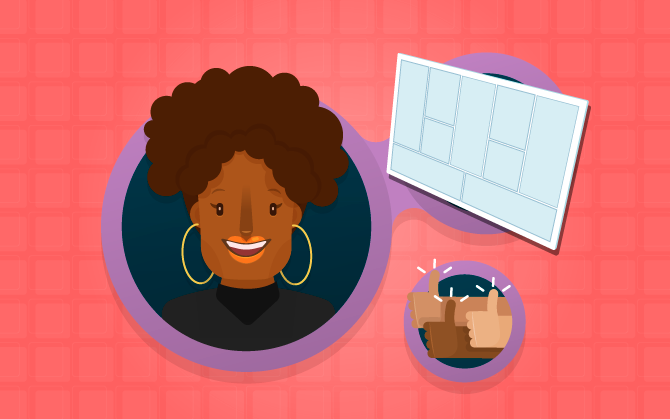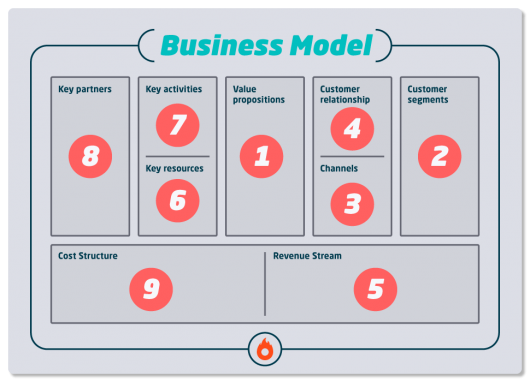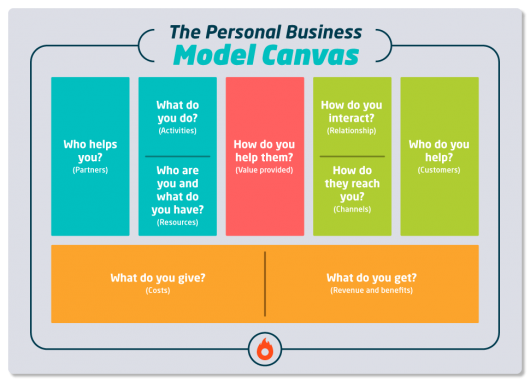
How to use Personal Canvas to boost your development
See how you can use this methodology in both your professional and personal life!

What will we see in this post
Canvas is a tool used to design business models. It helps to create companies that stand out, are profitable and reach the heart of plenty of customers.
However, it’s also possible to use this tool for one’s own development, the so-called Personal Canvas.
We’ve gathered everything you need to know on the subject. In the following topics, we’ll tell you what Canvas is, its benefits and how to use it to fast track your professional career. Read on!
What is Personal Canvas and what are its benefits
The Business Model Canvas (BMC) is used to design and build a systemic view of companies.
Over time, due to the platform’s great popularity and effectiveness, the tool was applied to people’s professional lives.
In short, Personal Canvas is a management tool that aims to identify the strengths and weaknesses of individuals, as well as opportunities to strengthen and boost professional trajectories.
There are many benefits related to the use of the tool. In the first place, it allows a person to do a self-evaluation. For example, professionals get to know themselves better by understanding what resources they have available and what their usual activities are, two important Canvas columns.
It also provides a different way of looking at the external environment, identifying key partners, customers (i.e., those being helped) and the channels that can be used to start a relationship. Thus, it is possible to manage your tasks and duties better.
The 9 steps to fill in the Personal Canvas
The Personal Canvas chart is subdivided into 9 main columns. In the next topics, we’ll show you how these columns relate to each other and the correct order in which they’re filled out.

1. Value propositions
The main question for this first block is: How will you help people? Think of yourself as a business, where you must produce something and supply a certain existing demand. But what?
You can create one or more value propositions. Ideally, you should objectively focus on a few (up to four). One example is “helping people who have trouble eating healthy foods”.
2. Customers
Now that you understand what to do, it’s time to define for whom you are going to do it, i.e., your customers.
If you’re self-employed, your customers are probably individuals. Define their main characteristics: age, region, educational background, etc.
On the other hand, if you’re an employee, your customer is probably your current company and others in the same segment.
Therefore, study and define these businesses in a few words.
3. Channels
A third question is: How do your customers find you?
You need to create channels so that you can keep in touch with your target audience, make new sales and start a relationship.
Can your customers reach you through social media, for example? Or is providing service from an office more useful? How about co-working contact? Think about the best channels.
4. Relationship
If you are your own business, you’ll want to sell to as many customers as possible. But, selling isn’t quite enough. You need to build a long-lasting and profitable relationship.
In the fourth step, try to answer the following question: How will you interact, even after the sale?
You can create an email marketing or social media strategy, for example.
5. Revenue streams
The source of revenue refers to how you will capitalize by meeting your customers’ demands. In other models, the idea is to understand how you can gain the desired resources.
If you’re employed, your source of revenue is your salary, but it might also be from overtime and occasional services provided for your coworkers.
If you’re self-employed, you need to think about other services that ensure new sources of revenue.
6. Key resources
Let’s suppose that you’re going to create a video class to meet your customers’ demands and generate revenue. What are the resources necessary to make this happen?
You might need a camera or smartphone with good resolution, a tripod, and a professional microphone. These resources, which are the most important for the job, are described in the sixth block.
7. Key activities
Let’s suppose that your value is helping people lose weight by means of your video classes where you provide tips and teach a few different tricks. The question is: What are the main steps in this process?
You’ll need to create a script, record the video, edit it, eliminate mistakes and make it available to your customers by means of digital platforms. As you can see, it’s possible to describe an activity in a few words.
8. Key Partners
Can all suppliers be considered key partners?
This is a common question, and the answer is no. A key-partner is someone closer, more exclusive and who creates mutual advantages.
Imagine an architect who establishes a partnership with an electrical engineer so that they can work together on construction projects; or a baker who buys his cheese from a single supplier. These are examples of partnerships.
Find out which partnerships can help you grow in your career, and include them in this block.
9. Cost structure
In the last block, you’ll define what the sources of costs are, i.e., the expenses necessary for the offer and maintenance of your value proposition.
Costs can be quite diverse, such as the payment of rent for a video recording room, the purchase of machines, office furniture, the printing of business cards, etc. Define those that are the most relevant.
How Personal Canvas can promote advances
Filling out the Personal Canvas chart isn’t difficult. Follow the defined step-by-step process to the end, and you’ll be able to have a broader view of your professional profile.
There are many advantages to doing this. First of all, you can use your creativity to create value propositions, define new customers and new revenue channels.
Imagine someone who works in advertising and is filling out Canvas: They might include advertising services in the revenue channels, but also video classes and eBooks, which teach other people to be more creative.
Another advantage is that the chart is visual. You are visualizing the construction and you can easily make changes. It’s different from a career plan, which has a lot of information and written pages.
Finally, you are now familiar with the topic. Take the opportunity to fill out your Canvas chart, find new career opportunities and boost your results.
Throughout the process, be creative and imagine new ways to generate revenue. By doing so, you and your customers will benefit from it.





